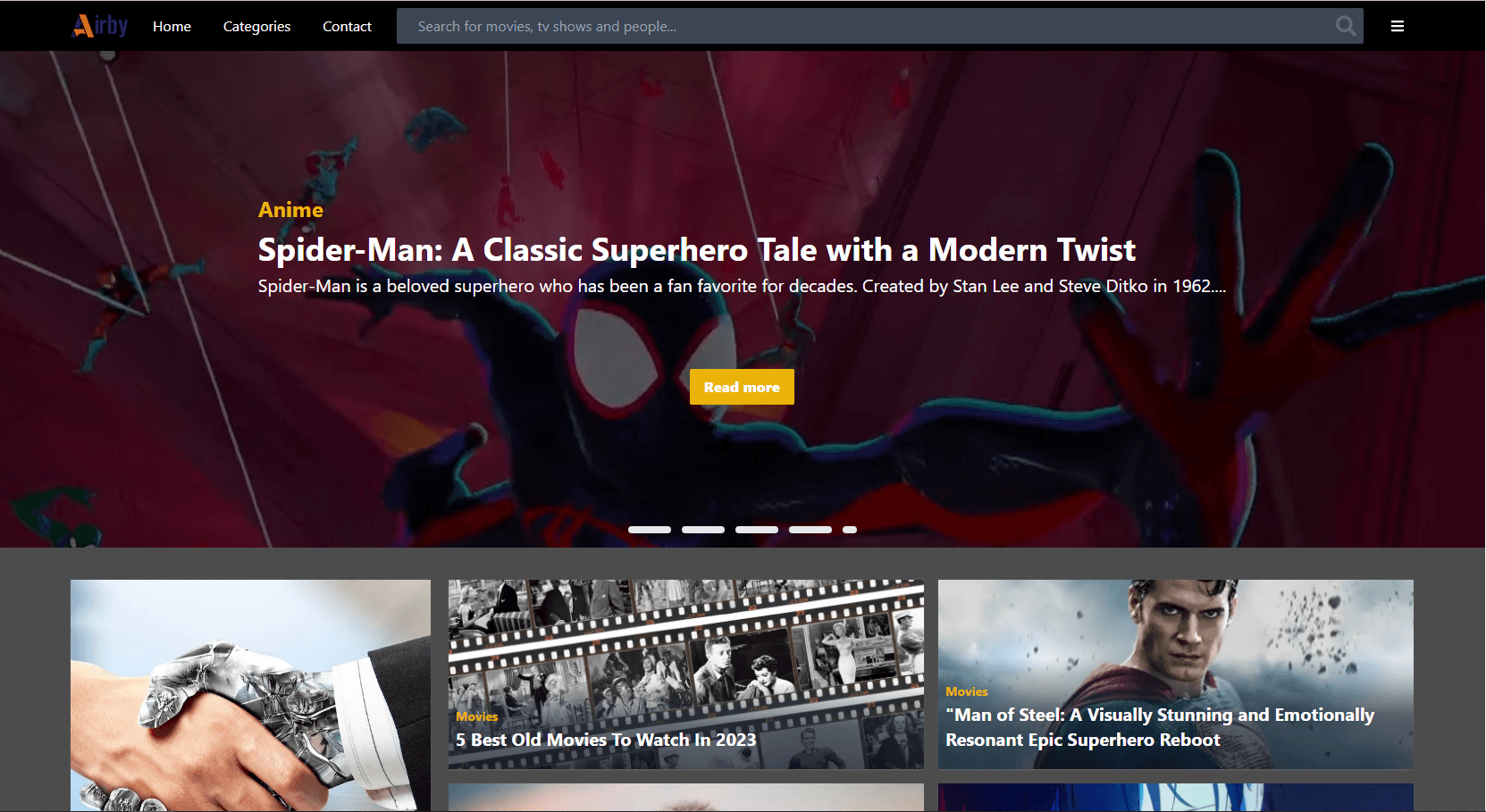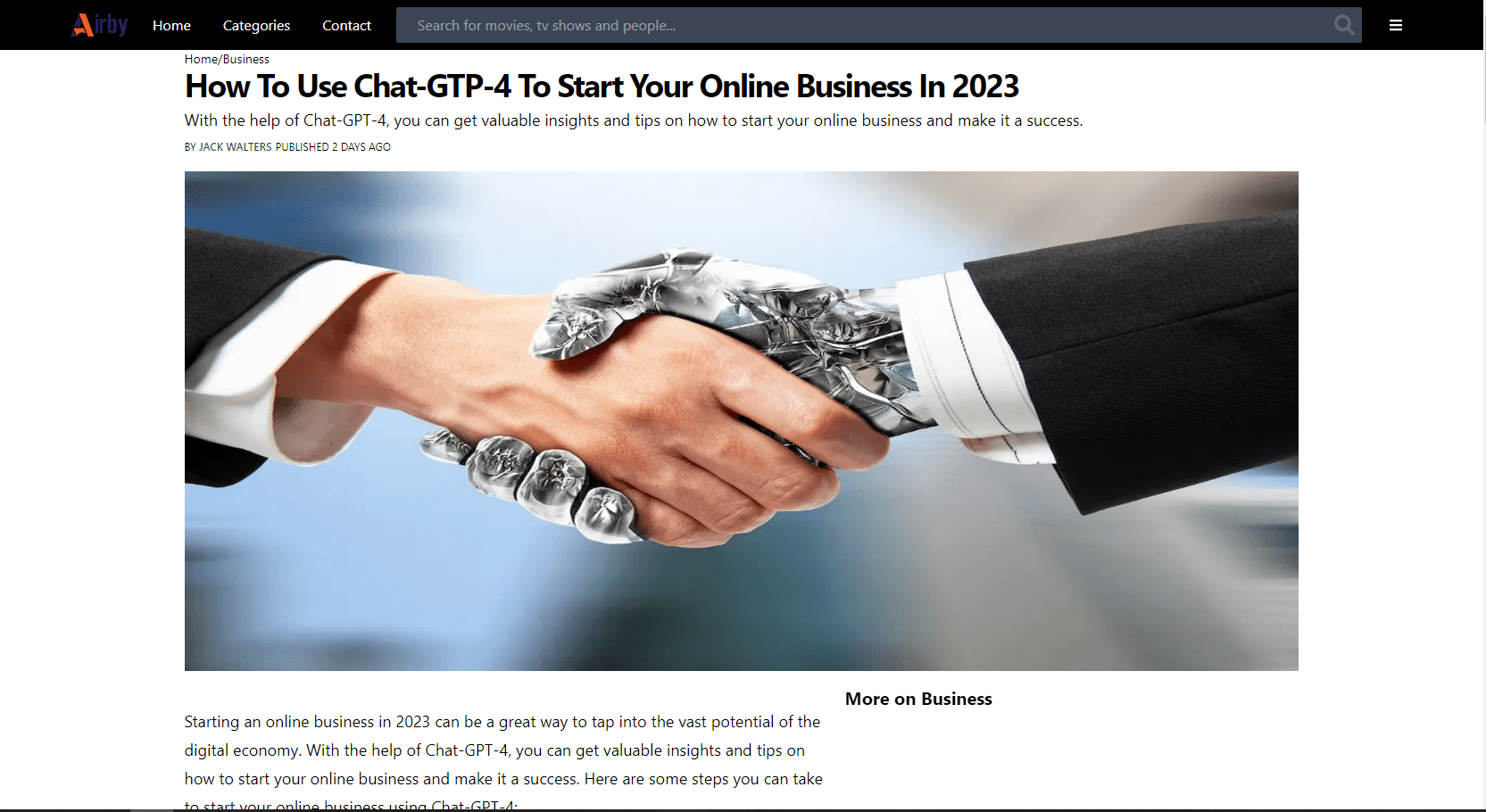Introduction:
Airby Blog is a blog project that I developed using various technologies such as TypeScript, Tailwind CSS, Next.js, CMS Sanity.io, and Disqus for commenting. The project's main goal is to provide a platform where users can read and engage with interesting blog posts on various topics.
Project Overview:
The Airby Blog project was developed with the following objectives in mind:
- To create a modern, responsive and user-friendly blog
- To enable the creation and publishing of blog posts
- To provide an easy way for users to read and navigate through the blog
- To integrate a commenting system to enable readers to engage with the blog
- To ensure the blog is optimized for search engines
Tech Stack:
The tech stack used for this project includes TypeScript, Tailwind CSS, Next.js, CMS Sanity.io, and Disqus. Here's a brief overview of each of these technologies and why they were chosen:
- TypeScript: TypeScript is a statically typed language that offers better type safety, improved code maintainability and productivity. Its use in this project ensures better error handling and makes the code more readable and maintainable.
- Tailwind CSS: Tailwind CSS is a utility-first CSS framework that enables developers to create responsive and modern UIs quickly. It was chosen because of its simplicity and flexibility.
- Next.js: Next.js is a React-based framework that offers server-side rendering, static site generation, and client-side rendering. Its use in this project ensures fast page loads and better SEO.
- CMS Sanity.io: CMS Sanity.io is a headless CMS that enables developers to create, manage and deliver content easily. Its use in this project ensures an easy way to create and publish blog posts.
- Disqus: Disqus is a commenting system that enables users to leave comments and engage with the blog. Its use in this project ensures better user engagement and feedback.
Challenges Faced:
One of the main challenges faced during the development of the Airby Blog project was integrating the Disqus commenting system into the blog. The process involved creating an account with Disqus, configuring the Disqus plugin, and ensuring that the comments were properly displayed on the blog.
Another challenge was optimizing the blog for search engines. This involved ensuring that the blog was properly structured, using appropriate meta tags and ensuring that the blog was properly indexed by search engines.
Completion Date:
The Airby Blog project was completed within one week. The project was split into smaller tasks, and each task was assigned a deadline to ensure timely completion.
Conclusion:
The Airby Blog project was an interesting and challenging project that enabled me to learn and improve my skills in web development. The use of technologies such as TypeScript, Tailwind CSS, Next.js, CMS Sanity.io, and Disqus made the project more robust, responsive, and user-friendly. I believe that the Airby Blog project has the potential to become a popular platform for users to read and engage with interesting blog posts.


